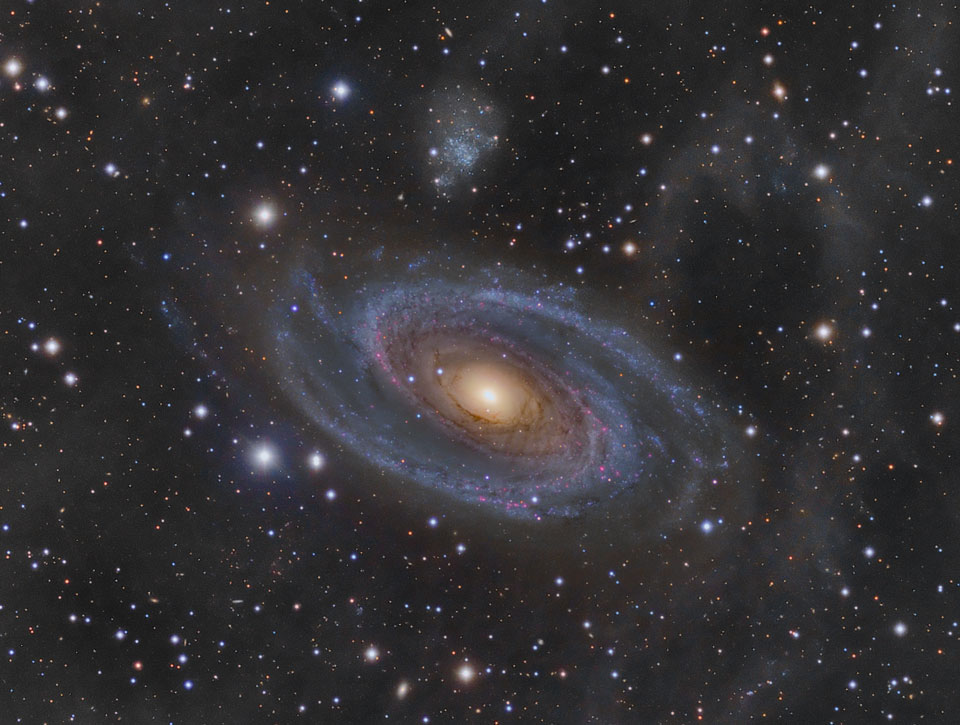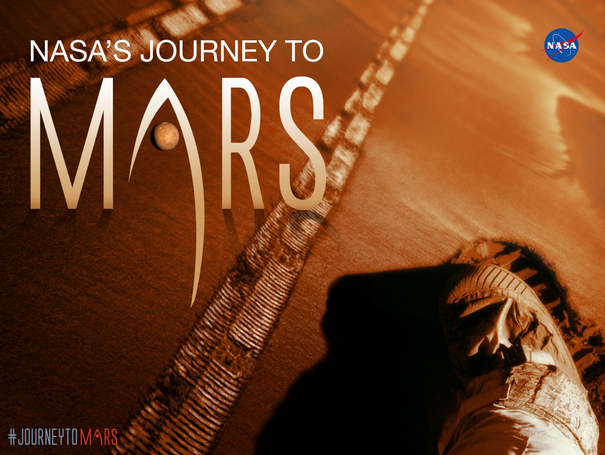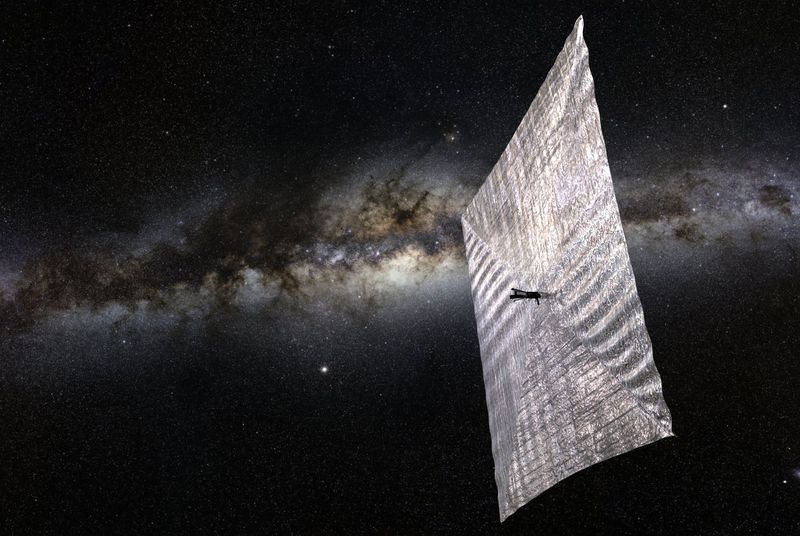The most interesting events of astronautics and astronomy for the week (02.05-09.05)

This week even more interesting things happened than in the past:
- Vampire systems from the center of the galaxy;
- Gallery of pictures taken by Rosetta and Philae;
- Exoplanet too large;
- On the ISS tried espresso, prepared at the station itself;
- SpaceX has conducted tests of an astronaut emergency rescue system;
- Hubble discovered the most distant galaxy from Earth;
- NASA Prize for the idea of colonizing Mars;
- On May 20, a spacecraft with a solar sail will be launched into space.
Black holes in the center of our galaxy

Astronomers at Columbia University recently published the results of their research, based on data from the NuSTAR X-ray telescope. The telescope allowed to study the middle of the Milky Way, and estimate the amount of radiation in this region.
')
As it turned out, the center of the galaxy is much more hard x-rays than previously thought. This may indicate, for example, a much larger number of accretion systems, or dense fluxes of particles interacting with the radiation surrounding them.
It may well be that in the center of the galaxy there is a black hole, which is the source of powerful x-rays. Such a system really is a "vampire", absorbing everything that is close.
ESA has published a gallery of images of Rosetta and Philae

The European Space Agency began publishing the entire archive of images taken by the Rosetta and Philae spacecraft. Currently, all pictures taken from February to September 2014 are being published.
The most interesting pictures have not yet been published, so we are waiting.
It is worth noting that comet Churyumov-Gerasimenko will fit the minimum distance to the Sun on August 13. According to scientists, the activity of all the processes occurring now on the comet, until this point will only grow. The usual model of a comet approaching the Sun involves heating the comet's areas, which are illuminated by sunlight, and here, according to scientists, the main activity on the release of a comet's substance should go.
All photos posted by ESA specialists are available at this link .
Exoplanet that cannot be

More recently, scientists have discovered a very strange star system, which, theoretically, can not exist. But there is. This system is a weak star whose luminosity is 12 times less than that of the Sun. And about this star, at a distance 10 times smaller than the distance from the Sun to Mercury, there is a huge planet.
Exoplanet, which passes in directories with code HATS-6b, is too big . Its size is approximately equal to the size of Jupiter, while the planet rotates around its star in a rather strange orbit (the distance from the planet to the star is 1/10 the distance from the Sun to Mercury). Naturally, the year is very short, and is equal to 3.3 Earth days.
Somehow, such a system has been formed, but so far scientists do not understand how and why - according to all canons of astronomy, such systems cannot exist. The mass of this planet, according to specialists, is approximately equal to the mass of Saturn. Its size, as mentioned above, is equal to the size of Jupiter. The strangeness is that the star around which this planet rotates does not heat HATS-6b sufficiently, and the whole system is very different from any other planet-star systems discovered by astronomers before. At the moment, the main theory of the origin of the system is the assumption that the planet has formed around another star, and then somehow HATS-6b has changed its light.
First espresso tasting on the ISS
The astronauts on the ISS live well. Difficult, but interesting work, daily routine, special products. Until now, the astronauts had everything except coffee. Now they got a coffee machine designed specifically for work on the ISS. Plus special dishes - cups that provide a normal flow of coffee, without the danger of splashing the drink, with the divergence of balls of liquid throughout the station.
The coffee machine was delivered to the ISS by the Dragon cargo ship. Testing espresso astronauts failed immediately. The device itself was developed by several companies at once, including Lavazza, Argotec and ESA. The weight of the coffee machine is 20 kg.
SpaceX tested the alarm system for the Dragon X

SpaceX company conducted a cosmonaut emergency rescue for the Dragon X. A mannequin surrounded by 270 different sensors, sensors, sound and video recording equipment took part in the tests. The entire surveillance system was supposed to record the load on the dummy and the overall situation inside the ship. The launch took place at 16:00.
In this case, 8 SuperDraco engines were used, whose shells were printed on a 3D printer. Engines develop significant power, enough to lift the capsule by 100 meters in 2 seconds, and by 500 meters in 5 seconds. Thanks to such high speed, the creators of the system hope to lead the ship and crew away from a dangerous place in case of an emergency.
Hubble discovered the most distant galaxy

A team of scientists from Yale University and the University of California discovered the light of the galaxy in Hubble images. The age of such a galaxy is 13 billion years. In addition to Hubble, the Spitzer telescope and two mirror telescopes at the Keck Observatory in the Hawaiian Islands were used in the study.
The EGS-zs8-1 galaxy was detected by analyzing specific colors in images taken from the Hubble and Spitzer telescopes and is one of the brightest and most massive objects in the early Universe. “The observed galaxy in mass is already 15% larger than the modern Milky Way,” said Pascal Oish, a leading researcher at Yale University, Connecticut.
"It took only 670 million years, when the Universe was still young." New data on the remoteness of the galaxy allowed astronomers to determine that EGS-zs8-1 was at the stage of very active star formation, about 80 times faster than these processes occur in the modern Milky Way (for our galaxy, this figure is one star per year).
"Journey to Mars": a NASA premium of $ 5,000 for the idea of minimizing the dependence of the Martian colony on Earth

There is water on Mars, but in any case, a colony of earthlings on Mars will be very dependent on the home planet. Delivering cargo to Mars is not a cheap pleasure, and often delivering something to the colonists will fail.
In order to find solutions to the problem of Mars’s dependence on Earth, NASA announced the Journey to Mars competition. The goal of the competition is to find ideas for reducing the dependence of a colony of earthlings on the Earth. The prize for the best idea will be money - an amount of $ 5000.
Participants must describe one or more systems, capabilities, or operations that are needed to achieve a goal. Projects must be technically achievable, economically viable, and most importantly, they must minimize dependence on the Earth. The authors of the three best ideas will receive from $ 5 thousand, the prize fund is $ 15 thousand.
May 20 in space will experience a solar sail on the satellite CubSat

On May 20, a spacecraft with a solar sail will be launched into space. The device is a satellite created according to the CubeSat standard. This satellite is equipped with four triangular sails.
The spacecraft will be launched into space by an Atlas V carrier rocket, a system developed by the United Launch Alliance organization, behind which Boeing and Lockheed Martin stand.
The LightSail project is the brainchild of The Planetary Society , a non-profit association founded by Sagan and other renowned scientists.
Source: https://habr.com/ru/post/379337/
All Articles